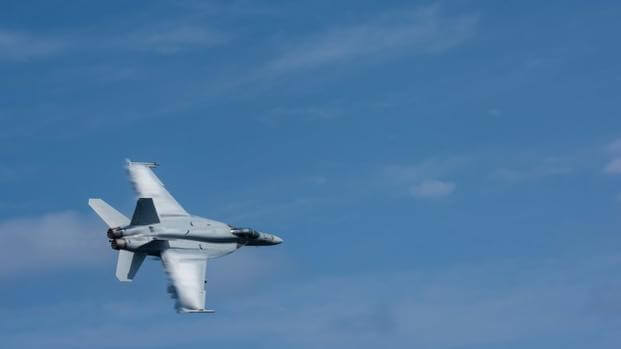The U.S. government has agreed to a potential sale of nearly 20 F/A-18E/F Super Hornet aircraft to Canada worth $5.23 billion, the State Department announced.
The foreign military sale stipulates 10 F/-A18E and eight F/A-18F Boeing-made fighter jets, the State Department said Tuesday.
The package would include accompanying F414-GE-400 engines; AN/APG-79 Active Electronically Scanned Array (AESA) radars; AN/AAQ-33 Sniper Advanced Targeting Pods; among gun, tactical radio, joint-helmet, electronic warfare, navigation and video, and transponder systems and appropriate spare parts, officials said in a release.
In addition to the planes, Canada would receive the latest AIM-9X Sidewinder Block II missiles, as well as guidance technologies and spare missiles for training, plus avionics integration and training support.
Related content:
- Canada to Buy Super Hornets as F-35 Hits Setbacks
- Turning Up Heat on F-35, Trump Hints at F/A-18E/F Buy
- Bahrain Plans to Buy Nearly $4 Billion Worth of F-16V Vipers
- Future Super Hornets Will See Through Stealth, Boeing Says
The news of the sale follows months of hesitation from The Liberal Party of Canada, headed by Prime Minister Justin Trudeau, over procuring Lockheed Martin Corp.-made F-35 Joint Strike Fighters.
In November, Canada's government sidestepped the issue by saying it would buy Super Hornets in the interim to bolster its aging fleet of CF-18s.
Defense Minister Harjit Sajjan said at the time that the overuse of Canada's McDonnell Douglas-made CF-18 fleet "would carry risk this government is not willing to take" to sustain current supplemental operations under NATO and the North American Aerospace Defense Command, or NORAD.
Competition to purchase an entirely new fighter jet will come at a later date, Sajjan said.
Canada has been in discussions for years to purchase approximately 60 F-35 jets, but lawmakers have grown weary of setbacks in the stealth jet program.
In June, Trudeau called the aircraft one that "does not work and is far from working."
Canada's Super Hornet buy is for the Block II configuration -- not the Block III, known as F/A-18XT.
The U.S. Navy has plans to upgrade its E/F fleet to the Block III configuration, as budgetary limitations allow.
The XT even caught the eye of President Donald Trump. Between December and February, he made multiple statements via Twitter and press conferences about the Super Hornet as an alternative to the F-35.
In February, Trump announced he was considering a "big order" of advanced Super Hornet XT fighter jets.
"We are looking seriously at a big order," he told the audience at Boeing's South Carolina facility during the unveiling of the company's 787 Dreamliner. "Do you care if we use the F-18 Super Hornets?"
Weeks later, Lockheed Martin announced the F-35's price had been steadily declining. CEO Marillyn Hewson even said Trump was justified in taking credit for accelerating deal-making on the F-35 and emphasizing a lower price point.
"If you think about his focus and his long-term trend of increasing more spending in national security and on defense spending, the F-35 is the largest program that the Department of Defense has in its budget," Hewson said in March.
"So for him to focus on the F-35 and to focus on how he can get the best price for the taxpayer going forward, I think, was perfectly appropriate," she said.








